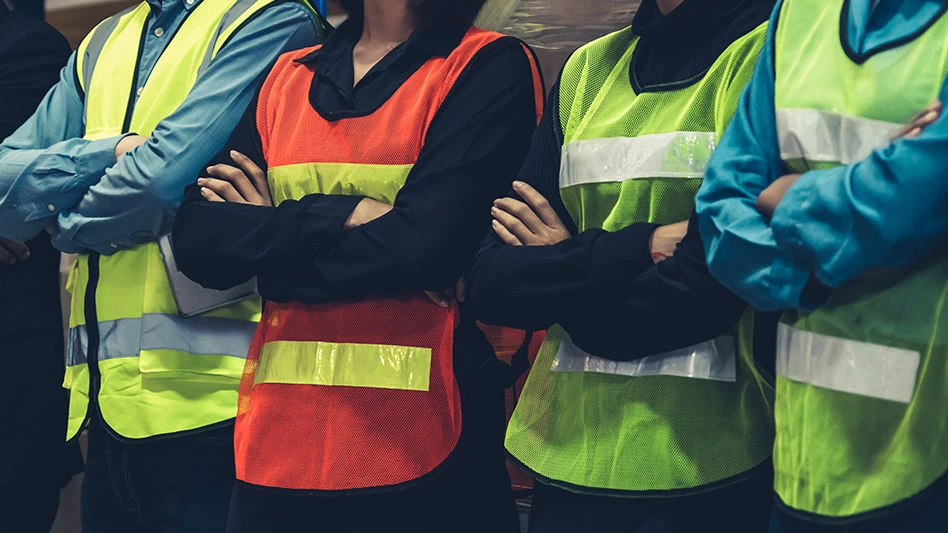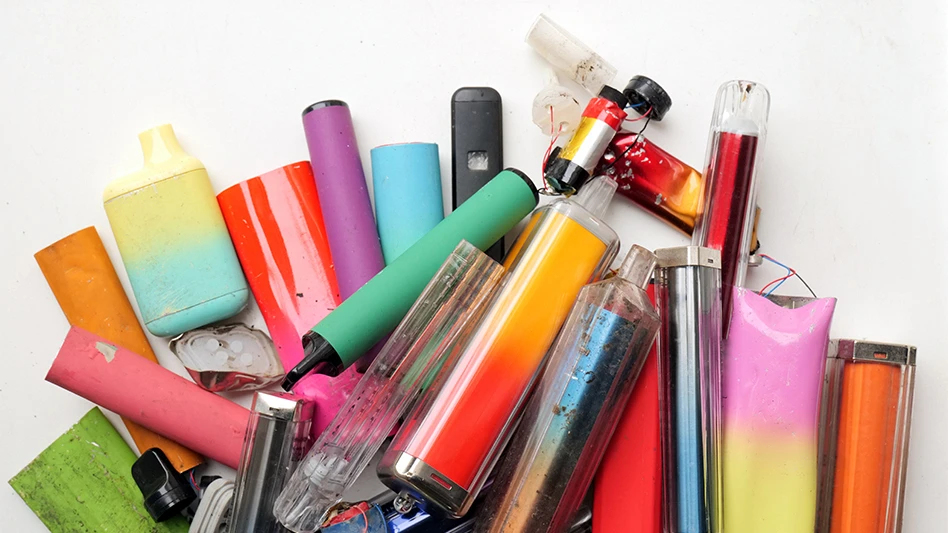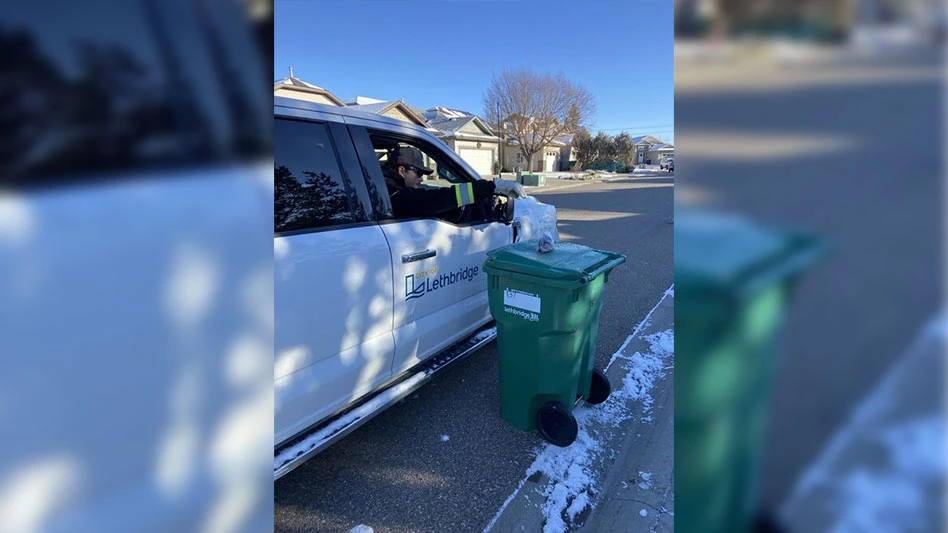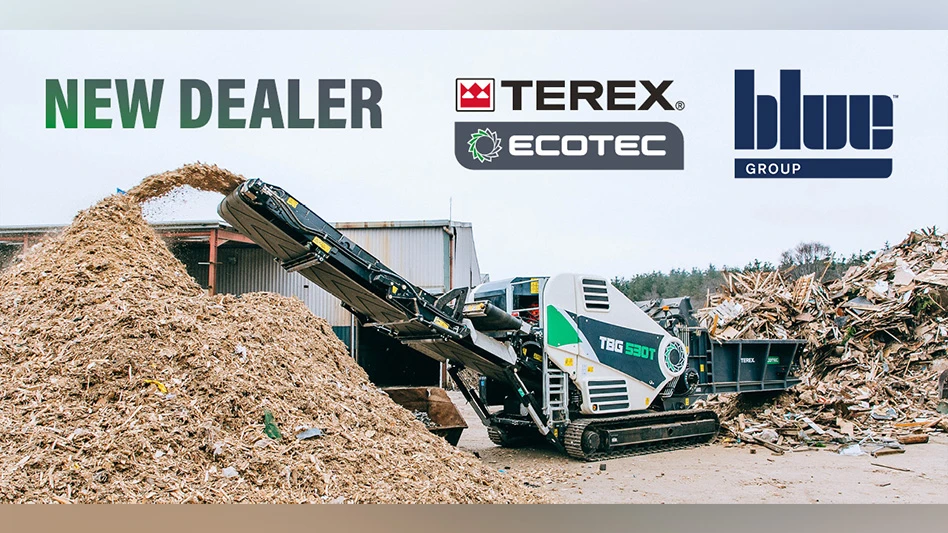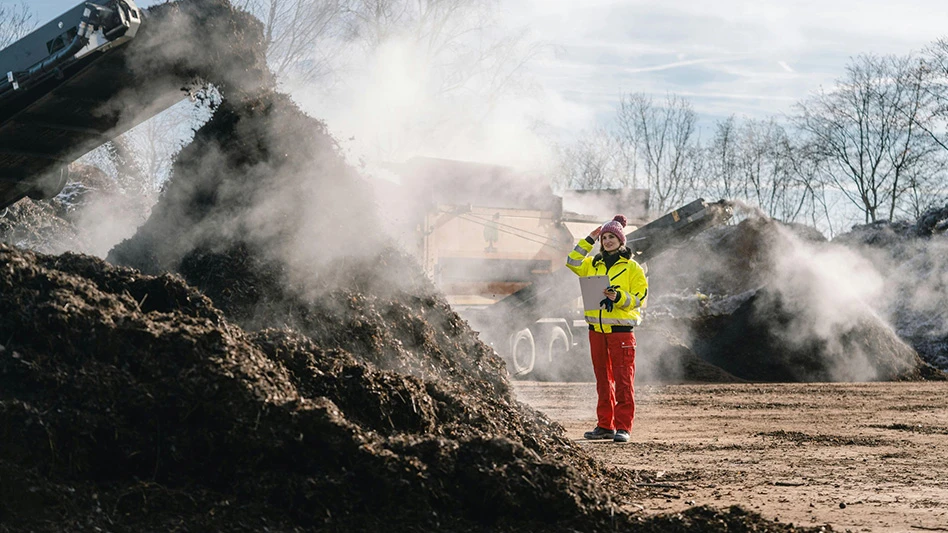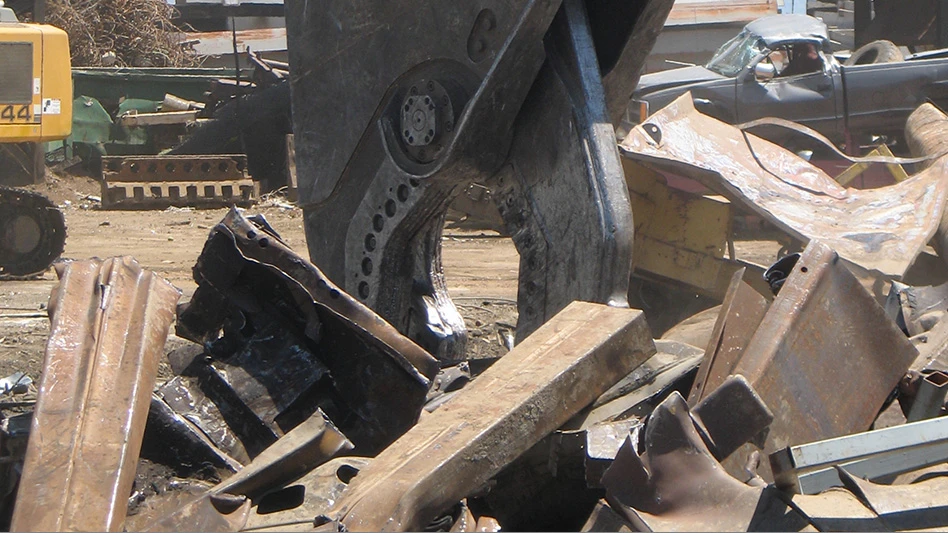
Photo courtesy of J&J Green paper and Stephen Donnelly & Associates
Collection networks for old corrugated containers (OCC), office paper and other packaging and printing and writing grades are well-established in the United States, leading to a 2020 national paper recycling rate of nearly 66 percent, according to the Washington-based American Forest & Paper Association (AF&PA).
For that rate to rise any higher, the collection of scrap paper used in other applications likely will need to increase, and one stream eyed by recycling advocates and paper producers alike consists of paper coffee and beverage cups.
Americans use some 136 million paper beverage cups per day, according to a 2020 North Carolina State University study. Globally, the annual consumption of paperboard cup stock is expected to reach 6.8 million metric tons by 2025, according to a 2019 study by Finland-based Markham Charta Oy.
A white paper released by Atlanta-based Moore & Associates this January observes, “As consumers and activist groups pressure large chain restaurants and consumer packaged goods brands to make packaging more recyclable, there is growing interest and activity in paper cup recycling.”
The 13-page document presents case studies and examples from paper mills and material recovery facilities (MRFs) on their experiences in handling used cups as a secondary fiber grade.
Bill Moore and Susan Cornish of Moore & Associates tell Recycling Today they are continuing to gather information on collection and sorting methods and mill acceptance of used paper beverage cups.
Cup board as a postindustrial paper grade has long been recyclable, says Joel Litman of Dallas-based Texas Recycling. “Coffee cup manufacturers are already recycling their scrap generation and have been doing so for years,” he comments.
“Because of the [polymer coating] used in the manufacturing of the cups, the end-use markets for the scrap are limited but are constant,” Litman says. “Usually, these are export markets.” He adds, “This grade is kept separate at the generator” manufacturing plant.
The polymer coating used to keep the paperboard liquid-resistant is one reason why cup board has fewer end market destinations compared with many other board grades. “The challenge for mills in using cups and other polycoated paper packaging has always been the time required in the hydro pulper to remove the paper fiber from the poly layer,” states the Moore & Associates report.
Nonetheless, the hunt for fiber by mills and the pressure to be sustainable placed on retailers has led to considerable testing of methods to collect and pulp used cups.
Among the MRF operators the Moore & Associates report cites is Sioux Falls, South Dakota-based Millennium Recycling. Contacted in early May by Recycling Today, the company’s Shannon Dwire says cup recycling was a topic of conversation at a joint Recycling Industry of Minnesota (RAM) and Solid Waste Association of North America (SWANA) industry event she had attended earlier that day.
Dwire says some environmental advocates prefer the “reduce” option for the cups—having them replaced by reusable mugs or cups. She says, though, that because they exist Millennium has made the attempt to recycle them and has met with some success.
Millennium ’s MRF sorting system can handle the cups “just fine,” she comments. Dwire says while some MRFs attempt a positive sort, “In our single-stream system, most fiber goes to mixed paper, and the cups end up there and get marketed back to mills that want to close the loop.”
Because of the two-dimensional versus three-dimensional nature of sorting fiber from plastic and metal containers, Dwire says the odds of the cups entering the fiber stream improve “if they’re kind of crushed.”
Lee Cornell of First Star Recycling in Omaha, Nebraska, reports similar results. “When running on a single-stream line, the cups are likely to be flattened and go with other two-dimensional materials, like paper and cardboard,” he comments.
“If the cups pass through to the container side due to behaving as a three-dimensional material, it will require another sort to harvest them, and it’s unlikely most operations will do that,” he adds. “If they go to the container side, it’s more likely they will be treated as miscellaneous paper. In some operations, unfortunately, this is trash.”
The Millennium Recycling MRF has an optical sorter in place to identify paperboard cartons, so at that stage cups often join the cartons. Thus the optical sort “throws [the cups and cartons] into the mixed paper,” creating “less work for hand sorters.”
Millennium collects cups in household and small business single-stream programs. The company does not closely measure the volume of cups streaming in, “But you see them in there; they’re in the mix,” Dwire says.
Cornell adds, “Collecting recyclable coffee cups from commercial points of generation is possible, as long as the weight justifies pick up.” More often, he says, “This generally means picking up with other materials. Commercial single-stream likely makes sense–collect these cups, bottles, OCC, office paper and various other materials.”
Collecting cups separately at coffee shops or fast food outlets has not met with rapid acceptance, Litman says. “Starbucks had a trial program at a few New York City shops some years ago, but it proved unsuccessful."
Leonard Zeid, a St. Louis-based broker with Midland-Davis, also points to the Starbucks trial when commenting, “I don’t think this is viable collection; they will weigh little and would have to be kept in separate plastic bags, etc., from the trash. I have seen [retailers] throwing away empty dairy (natural high-density polyethylene, or HDPE) plastic jugs because they have no way to store them, [and] those natural dairy jugs at times have been priced higher per pound than [aluminum] UBCs.”
Space constraints and pest control concerns mean “keeping the cup separate from the trash generated at the store, and the volume needed to be viable, are challenging,” says Litman. “Plus, the cups may still contain some amount of liquid.”
Food and beverage residue is unwelcome at traditional paperstock plants, but MRF operators already cope with it as a daily challenge. “Residue, such as sugar or milk or coffee in a single-stream program should not be much of an issue,” Cornell says. “Think about beer, soda and water bottles, which usually have a small amount of residue.”
Dwire says, “Most single-stream items tend to have some kind of residue—think about jam in a jar.” A less welcome contaminant, she says, can be plastic lids, straws or stirrers. “That is not something that’s acceptable,” even at paper mills willing to screen out the poly coatings, she says.
The ability of mills to accept polymer coatings was part of the focus of the Moore & Associates report. The consulting firm identified 31 North American mils that will accept the cups as a fiber source, with many of those doing so only as a limited-volume blend fraction in mixed paper.
Zeid, a past president of the Institute of Scrap Recycling Industries Paper Stock Industries (PSI) Chapter, lists boxboard mills, tissue mills and mills with dry lap pulping technology as buyers of used cups. Some of these mills, says Zeid, “already accept poly right-side containers, including ice cream containers.” Like Dwire, he says of some mills, “If the cups (cleaned out) are mixed with office paper, they would accept them.”
Dwire says MRF operators putting cups in its mixed paper blend “have to work closely with the mills you ship to.” Even so, she says, “Some MRFs still are scared to try it,” and adds that some “older mills may not want” any cups because their pulping and screening systems are not configured to remove the polymer material.
Research and funding has gone into producing nonplastic or compostable barrier materials. Companies including Miami-based J&J Green Paper and United Kingdom-based Aquapak Polymers have announced new types of barrier products.
As of mid-2022, it remains uncertain whether such efforts will change the end market potential for used paper beverage cups. The Moore & Associates report says these efforts may soon make a difference. “As the use of alternative barrier coatings to polyethylene begins to expand, cups and other poly-coated packaging will eventually become easier for mills to manage. [The] growth of more easily recyclable coatings and cup materials in Europe suggests there is potential for widespread adoption in the long term.”
Even though, in the meantime, the polymer coatings remain a barrier, both the Moore & Associates study (which can be viewed on this web page) and the AF&PA express optimism about the recyclability of the material.
On a web page devoted to the topic, AF&PA answers the question “Are paper cups recyclable?” with an exclamatory “Yes, paper cups are recyclable!” Citing the Moore & Associates study, AF&PA continues, “There are currently 31 mills across North America recycling paper cups. The fiber from those cups is then used to make tissue, paper, containerboard and paperboard.”
The Moore & Associates report summary and outlook section does not include any exclamation marks. However, it does conclude, “In the last two to three years, significant progress has been made in adding cups to residential recycling programs and identifying end markets at mills. This suggests a significant opportunity to continue the expansion of cup recovery through residential recycling programs.”
Latest from Recycling Today
- Phoenix Technologies closes Ohio rPET facility
- EPA selects 2 governments in Pennsylvania to receive recycling, waste grants
- NWRA Florida Chapter announces 2025 Legislative Champion Awards
- Goldman Sachs Research: Copper prices to decline in 2026
- Tomra opens London RVM showroom
- Ball Corp. makes European investment
- Harbor Logistics adds business development executive
- Emerald Packaging replaces more than 1M pounds of virgin plastic
